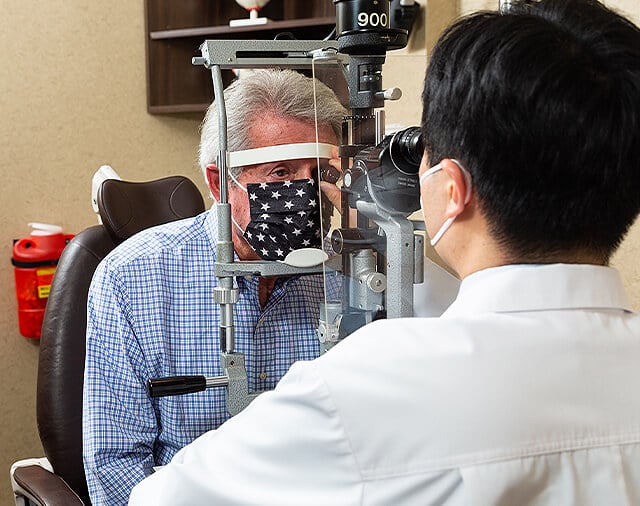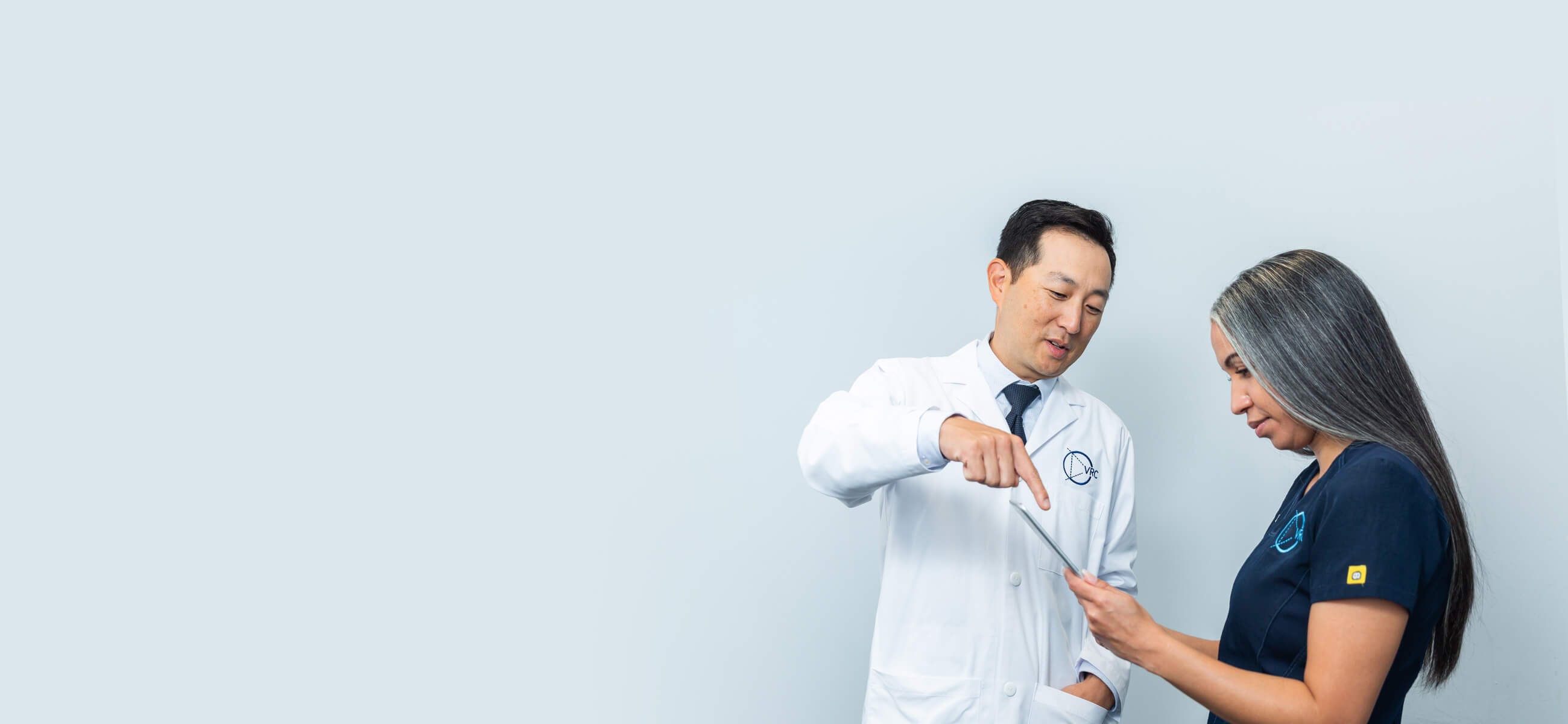Retinal Vein Occlusions & Artery Occlusions

Retinal vein and artery occlusions are a type of condition in which a component within the retinal vasculature system becomes blocked or closed off. Common risk factors for this type of condition include:
- High blood pressure
- Diabetes
- Obesity
- High cholesterol
- Smoking
- Cardiovascular disease
- Age
- Blood clotting disorders
- Hardening arteries
- Inflammatory conditions
Choose Vitreoretinal Consultants of NY for Retinal Vein & Artery Occlusions in New York
At Vitreoretinal Consultants of NY, we are dedicated to providing exceptional retinal care to patients across the Greater NYC Metropolitan Area, including Queens, as well as Nassau, Suffolk, Rockland, and Westchester counties. For us, nothing is as important as your eyesight. Contact us with any questions, or schedule an appointment with VRC today.
Retinal Vein & Artery Occlusion Symptoms
Although retinal vein and artery occlusions are similar, there are subtle differences between them.
Branch Retinal Vein Occlusion (BRVO)
Branch retinal vein occlusion (BRVO) occurs when one or more of the central retinal vein branches that run through the optic nerve becomes obstructed, which leads to blood and other fluids leaking into the retina. BRVO symptoms include loss of peripheral vision, distorted or blurry central vision, and floaters. In cases where the BRVO occurs outside of the center of the eye, there may be no symptoms.
Central Retinal Vein Occlusion (CRVO)
Central retinal vein occlusion (CRVO) occurs when the central retinal vein becomes blocked or closed off. There are two subtypes of CRVO: non-ischemic and ischemic. Non-ischemic is the more mild form of the two and is characterized by mild blurriness, leaky retinal vessels, and macular edema. Ischemic CRVO on the other hand is more severe and leads to worsening vision with a small chance for improvement. In ischemic CRVO, the retinal blood vessels become closed off, which can lead to the growth of new, abnormal blood vessels that obstruct the normal flow of fluids.
Branch Retinal Artery Occlusion (BRAO)
Branch retinal artery occlusion (BRAO) occurs when a branch of the central retinal artery becomes obstructed, which can lead to a sudden painless loss of peripheral vision. BRAO can also cause blurred vision or scotomas, which are blind spots in your vision.
Central Retinal Artery Occlusion (CRAO)
Central retinal artery occlusion (CRAO) occurs when the central retinal artery becomes blocked. It is often caused when the carotid artery (located in the neck) develops a clot, preventing blood from flowing normally to the retina. CRAO is also known as an “eye stroke” and can lead to severe vision loss.
How Retinal Vein & Artery Occlusion Are Diagnosed
To diagnose whether or not the retina has experienced some kind of vascular event, your retina specialist will perform a thorough eye exam. This exam assesses how your eye is functioning by checking your vision, measuring eye pressure, taking blood pressure, and performing an eye dilation. Other diagnostic tests can include:
- Optical coherence tomography (OCT): In OCT, infrared light is used to capture cross-sectional images of the retina. OCT can be used to determine whether there has been any leakage in the retina.
- Ophthalmoscopy: This exam uses an ophthalmoscope to shine light onto the retina and highlight areas in which there may be damage.
- Fluorescein angiography: In this test, a colored dye is injected into the bloodstream where it travels into the ocular blood vessels. Once there, the dye highlights any structural issues or abnormalities. A camera then captures images of the retina.
- Indocyanine green angiography: Similar to fluorescein angiography, this test uses a dye that lights up when exposed to infrared light. This method is used to examine the deeper blood vessels within the retina.
Retinal Vein & Artery Occlusion Treatment
Retinal vein and artery occlusions are generally treated one of the following ways:
- Managing underlying conditions and risk factors: In some cases, the best course of action is to simply address underlying risk factors. For example, if a patient has high blood pressure or cardiovascular disease, a doctor may prescribe medications that help to get those conditions under control.
- Anti-vascular endothelial growth factor (anti-VEGF) medications: Anti-VEGF medications refers to a group of drugs that can inhibit abnormal blood vessel growth in the eyes. These medications include Avastin, Lucentis, and Eylea. After numbing eye drops are administered, anti-VEGF medications are injected directly into the eye.
- Focal laser therapy or surgery, also known as photocoagulation: Using a high-energy laser beam, photocoagulation works by breaking down blood vessel damage or sealing leaking blood vessels.
Retinal Vein & Artery Occlusion: FAQ
For more information, please visit the American Society of Retina Specialists website:


